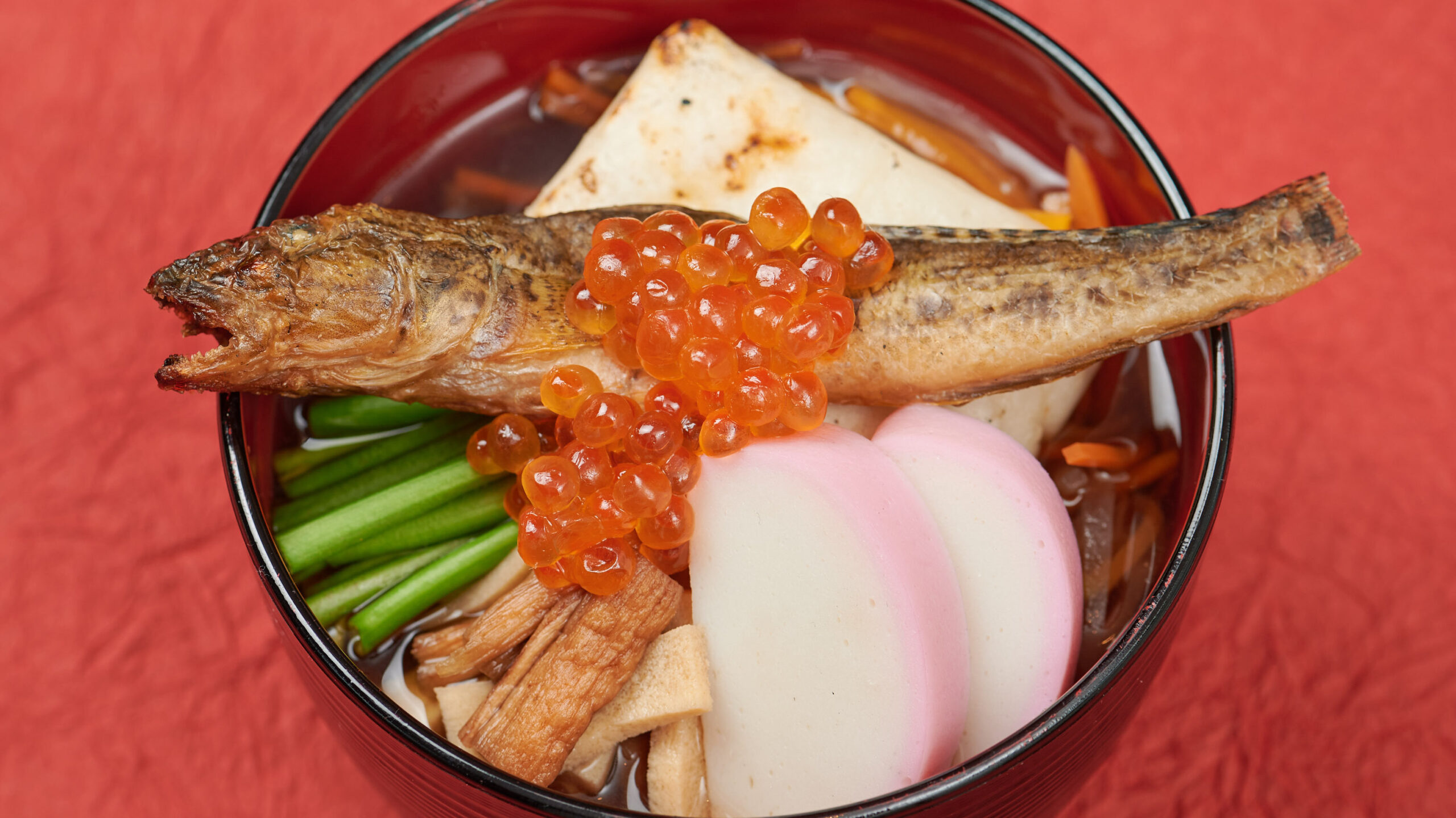
Well, butter my biscuits! You might not guess what the big deal is when New Year’s Day rolls around in Sendai. It’s not fireworks or parades, but a bowl of something truly special: Sendai Zoni! Let me spin you a yarn about this local gem.
Dish Name: Sendai Zoni
- Region / Location: Miyagi Prefecture, especially the Sendai area and various other parts of the prefecture.
- Primary Area of Tradition: Sendai area.
- Main Ingredients: Grilled Haze (a type of small fish), daikon radish, carrot, salmon roe (harako), Sendai seri (a type of Japanese parsley), burdock root, taro stems (zuiki), frozen tofu (fumi-dofu), and mochi (sticky rice cake).
How It’s Eaten / Served
Imagine a bowl brimming with goodies, so much so that the mochi is playing hide-and-seek underneath! That’s Sendai Zoni for ya. You’ll want to tackle that grilled haze after taking out the backbone. Trust me, it’s a fantastic way to kick off the New Year.
Cultural Background and Preservation
Dating back to the late Edo period, Sendai Zoni is more than just soup; it’s a celebration in a bowl. The contrasting colors – the proud grilled haze, the glistening salmon roe, the vibrant Sendai seri – make it a feast for the eyes. A quirky ingredient is “ohikina,” thinly sliced veggies that get a frosty makeover to soak up all the delicious broth. Speaking of broth, it’s traditionally made from grilled haze, which used to be plentiful. Nowadays, they’re a bit harder to come by, making this fish quite the star. And those jewel-like salmon roe? They add a burst of flavor, but like the haze, they’ve become a pricier addition. Fun fact: Lord Date Masamune, Sendai’s bigwig back in the day, apparently had a fancier version with dried abalone and sea cucumber!
Come late December, folks around here get busy prepping the “ohikina.” Then, either on New Year’s Eve or the big day itself, the grilled haze goes into the pot to make that flavorful dashi. Once that’s ready, in go the taro stems and “ohikina,” seasoned just right. The grand finale? A beautiful arrangement of grilled haze, salmon roe, and Sendai seri on top. For the first few days of the New Year, this is the taste of home for many in Sendai.
To keep this local flavor alive, groups like the “Miyagi’s Food Preservation Society” are out there showing everyone how it’s done at different events.
Additional information:
- Haze (ハゼ): A small fish, often grilled and dried to make a flavorful broth base (dashi).
- Harako (はらこ): Salmon roe, prized for its rich taste and texture.
- Sendai seri (仙台せり): A local variety of Japanese parsley with a distinctive aroma.
- Ohikina (おひきな): Thinly sliced daikon radish, carrot, and burdock root, traditionally frozen to enhance flavor absorption.
- Fumi-dofu (凍み豆腐): Freeze-dried tofu with a unique spongy texture.
- Zuiki (ずいき): The stems of the taro plant, offering a mild flavor.
- Mochi (餅): Sticky rice cakes, an essential part of Japanese New Year’s cuisine.
- Dashi (出汁): The fundamental Japanese broth, in this case made from grilled haze.
The information about regional cuisine featured on this website (Piggy's Grandma of Japan) is summarized and adapted from the Ministry of Agriculture, Forestry and Fisheries of Japan (MAFF) website, "Our Regional Cuisines"Additional commentary is provided based on the unique experiences and perspectives of the site's editors.
The copyright for the original content regarding regional cuisine belongs to the Ministry of Agriculture, Forestry and Fisheries of Japan.
The summaries and adaptations published on this site are intended for informational purposes only. Piggy's Grandma of Japan does not guarantee the accuracy or completeness of this information. For the most accurate and complete details, please refer to the original pages on the MAFF website.


